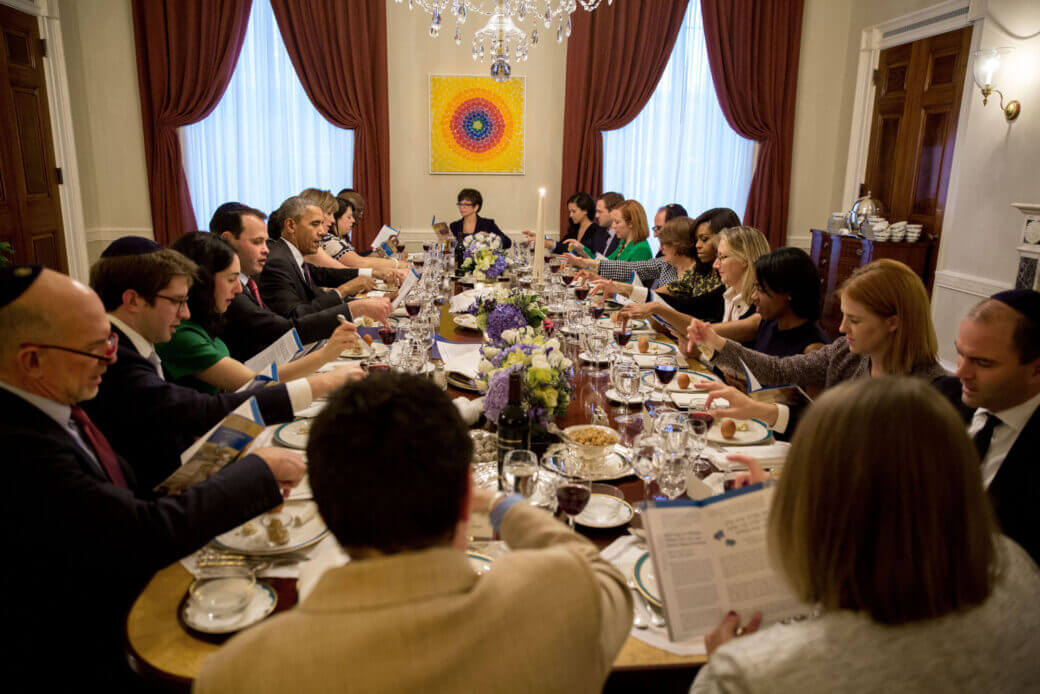How Did Jews Choose Their Last Names?
Sam Sherman of Voorhees, N.J., writes:
“Many Jewish family names are those of cities in Europe, often with a suffix that means ‘a resident of.’ For example: Berlin-er, Frankfurt-er, Minsk-y, Pinsk-y, Slutsk-y, Posnan-ski, Smolensk-y, etc. But surely these families weren’t known by the names of their cities while they were living there: They must have acquired them when they moved elsewhere, just as El Greco was known by that name not in his native Greece but after he moved to Spain. So when and why did so many Jews leave their former place of residence, taking its name with them, and where did they go?”
Mr. Sherman is, I think, only partly correct in his intuitively sensible conclusion that a 21st-century American Jew named, say, Roger Berliner must hail from a family that derives its name from an ancestor who once lived in Berlin and left it for elsewhere. There are several reasons why this is so.
When talking about Jewish family names, or at least, about the names of the Ashkenazic Jews of Eastern and Central Europe from which the great majority of American Jews descend, it is important to keep one fact in mind: Until the late 18th or early 19th century, very few Jews had such names at all. Every Jew, that is, had a Jewish “last name,” but it was a personal one that was not passed on to children, since it was the name of one’s father that was used on ritual occasions. If your name was Boruch and your father’s name was Simcha, you were called up to the Torah as Boruch ben-Simcha; if your name was Rokhl and your father’s name was Dovid, you were mentioned in a ketubah or marriage contract as Rokhl bas-Dovid. But your son Aryeh was called to the Torah as Aryeh ben-Boruch, and your daughter Rivka was written in the ketubah as Rivka-bas-Eliahu (if that was the name of Rokhl’s husband). Such “last names” were one-generational.
The introduction of permanent last names into European Jewish life came with the decision of European governments to make their Jewish populations, which had previously been granted a large measure of communal autonomy, fully subject to the same state regulations and bureaucratic record-keeping as were other citizens. In the Austrian Empire, which ruled much of southern and eastern Poland, Jews were ordered to take such names in the 1780s and ’90s; in Germany, in 1797; in tsarist Russia, in 1804.
How did a Jew choose a last name? There were various methods. Some Jews stuck with tradition and put a German or Russian suffix on their father’s name, as in Jacobsohn or Chaimovitch. Some, in Yiddish-speaking areas where children were distinguished from other, similarly named children by their mother (e.g., Leib Sorehs, “Sarah’s Leib,” or Velvel Chayes, “Chaye’s Velvel”), took their mother’s names. Some, who were priests or Levites, called themselves Cohen, Levi or one of the many variations of these. Some took the names of their professions, by which they may already have been known locally: Thus, Itzik der shekhter, Itzik the slaughterer, became Itzik Schechter, and Yosl der shuster, Yosl the shoemaker, became Yosl Schuster. Some arbitrarily took names that appealed to them: Rosenblum, “rose blossom,” for instance, or Goldstein, “gold stone.” And some named themselves for places.
Now, it would stand to reason, as Mr. Sherman writes, that if you were named Leybl and had moved from Pinsk to Minsk, where there were quite a few other Leybls, you might have become known in Minsk as Leybl der pinsker, and so taken the name Leybl Pinsker. This probably happened fairly often — Jews, after all, were extremely mobile compared to other Eastern-European populations and often moved for reasons of marriage or work — and certainly must account for many names such as those Mr. Sherman mentions. And if you were Leybl der pinsker and wanted your official name to sound more Russian, you might prefer to become Leybl Pinsky.
But there were other ways, too, in which you might have gotten such a name. Perhaps you continued to live in Pinsk but worked (as many Jews did) as an itinerant peddler, going from village to village with your wares; in that event, you might also have been known in the villages you frequented as Leybl der pinsker and chosen Pinsker or Pinsky. Or it may have been that you were proud of living in Pinsk, or simply couldn’t think of a better alternative, and registered yourself with the Russian authorities as Pinsker or Pinsky not because you had left Pinsk, but because you hadn’t. There must have been cases of that happening as well.
And finally, there were, in the late 18th and early 19th centuries, renowned rabbis — generally, Hasidic ones — who were also known by the places they lived in, so that Rabbi Aron of Karlin, for example, was called der karliner rebbe or der karliner, and Rabbi Yakov Yitzchak, the “Seer of Lublin,” der lubliner. Could not some of the Karliners and Lubliners in the world today be their descendants? Had El Greco been famous in Toledo, he might still have been El Greco even if he had never gone anywhere.
Questions for Philologos can be sent to [email protected].
The Forward is free to read, but it isn’t free to produce

I hope you appreciated this article. Before you go, I’d like to ask you to please support the Forward.
At a time when other newsrooms are closing or cutting back, the Forward has removed its paywall and invested additional resources to report on the ground from Israel and around the U.S. on the impact of the war, rising antisemitism and polarized discourse.
Readers like you make it all possible. We’ve started our Passover Fundraising Drive, and we need 1,800 readers like you to step up to support the Forward by April 21. Members of the Forward board are even matching the first 1,000 gifts, up to $70,000.
This is a great time to support independent Jewish journalism, because every dollar goes twice as far.
— Rachel Fishman Feddersen, Publisher and CEO
2X match on all Passover gifts!
Most Popular
- 1

News A Jewish Republican and Muslim Democrat are suddenly in a tight race for a special seat in Congress
- 2

Fast Forward The NCAA men’s Final Four has 3 Jewish coaches
- 3

Film & TV What Gal Gadot has said about the Israeli-Palestinian conflict
- 4

Fast Forward Cory Booker proclaims, ‘Hineni’ — I am here — 19 hours into anti-Trump Senate speech
In Case You Missed It
-

Fast Forward Jerusalem Post editor Zvika Klein, arrested in ‘Qatar-gate,’ says he’s being unfairly prosecuted for his reporting
-

Fast Forward Trump fires national security officials, reportedly at urging of Laura Loomer, far-right Jewish ‘Islamophobe’
-

Fast Forward Display honoring Jewish women graduates of naval academy removed ahead of Hegseth visit
-

Yiddish טשיקאַוועסן: מיידעלע געפֿינט 3,800־יאָריקע קמיע לעבן בית־שמש, ישׂראלTIDBITS: Little girl finds 3,800-year old amulet near Beit Shemesh, Israel
אַן עקספּערט פֿון פֿאַרצײַטיקע קמיעות האָט באַשטעטיקט אַז די קמיע איז געלעגן אויפֿן אָרט פֿונעם אַמאָליקן לאַנד כּנען.
-
Shop the Forward Store
100% of profits support our journalism
Republish This Story
Please read before republishing
We’re happy to make this story available to republish for free, unless it originated with JTA, Haaretz or another publication (as indicated on the article) and as long as you follow our guidelines.
You must comply with the following:
- Credit the Forward
- Retain our pixel
- Preserve our canonical link in Google search
- Add a noindex tag in Google search
See our full guidelines for more information, and this guide for detail about canonical URLs.
To republish, copy the HTML by clicking on the yellow button to the right; it includes our tracking pixel, all paragraph styles and hyperlinks, the author byline and credit to the Forward. It does not include images; to avoid copyright violations, you must add them manually, following our guidelines. Please email us at [email protected], subject line “republish,” with any questions or to let us know what stories you’re picking up.















